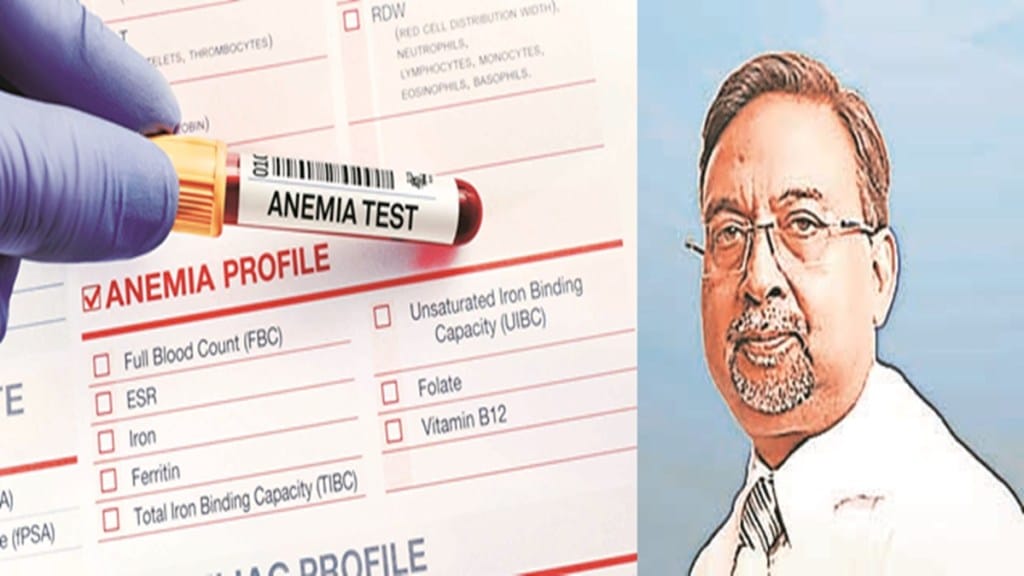Most of us go about life without knowing the deficiencies we might have, and while we seem to be in perfect health, nutritional deficiencies have a long-term effect on our health, and can be a factor for diseases like cancer. Iron deficiency is the most common, especially among women. Should people be worried about low ferritin content with mild anemia? Dr Rakesh Gupta, senior consultant, internal medicine, Indraprastha Apollo Hospitals, says: “Yes, low ferritin levels with mild anemia should not be ignored, even if symptoms seem minor. Ferritin is a key indicator of the body’s iron stores, and low levels often signal the early stages of iron deficiency. While mild anemia may not always cause overt symptoms, it can gradually impair energy levels, cognitive function, immune response, and physical endurance. Persistent low ferritin can also lead to more severe anemia if left untreated, potentially requiring more aggressive interventions like intravenous iron. Moreover, low ferritin might be a sign of an underlying issue such as chronic blood loss (from heavy menstruation or gastrointestinal problems) or malabsorption. Addressing low ferritin early allows for simpler treatment, such as dietary changes or oral supplements. Regular monitoring is especially important for women of childbearing age, athletes, vegetarians, and those with chronic conditions. So yes, it is worth taking seriously, even at the mild stage.”
How do low iron levels affect the body in the long term?
Chronic low iron levels can significantly impact long-term health, even beyond anemia. Iron is crucial for producing hemoglobin, which carries oxygen in red blood cells. Over time, insufficient iron impairs oxygen delivery to tissues, causing persistent fatigue, weakness, dizziness, and cognitive difficulties. In children, it can stunt growth and impair brain development. Adults may experience reduced exercise capacity, poor concentration, and increased susceptibility to infections due to weakened immune function. In women, it can worsen menstrual issues and fertility problems. Heart function may also be affected, as the body works harder to compensate for reduced oxygen levels, potentially stressing the cardiovascular system. Chronic deficiency may also lead to brittle nails, hair loss, restless leg syndrome, and cold intolerance. Left untreated, low iron can subtly erode quality of life and contribute to more complex health issues, making early detection and management essential, even when the symptoms seem non-specific or mild.
Why do otherwise seemingly healthy people with good diet have low iron levels? Do any diseases cause low iron?
Yes, several factors can cause low iron even in people who appear healthy and maintain a balanced diet. First, iron absorption varies between individuals and can be impaired by conditions like celiac disease, inflammatory bowel disease (IBD), or gastric surgery, all of which limit nutrient absorption. Second, chronic low-level blood loss-often unnoticed-can drain iron stores. Common causes include heavy menstrual periods, bleeding hemorrhoids, or gastrointestinal ulcers. Certain medications, like NSAIDs (eg ibuprofen), may contribute to GI bleeding over time. Some people, especially vegetarians or those eating high-fiber or tea-rich diets, may have reduced iron absorption due to inhibitors like phytates and tannins. Additionally, chronic diseases like kidney disease, cancer, or chronic inflammation (eg from autoimmune diseases) can disrupt iron metabolism. Even regular endurance exercise can increase iron loss through sweat, urine, and minor GI bleeding. So, a “healthy” lifestyle doesn’t rule out low iron, especially if these hidden causes are in play.
What are the warning signs to look for, as most people do not test for iron levels?
Iron deficiency often develops gradually and may not show obvious symptoms until it becomes moderate to severe. However, there are subtle warning signs to watch for. Common early symptoms include fatigue, weakness, and reduced stamina, even with regular sleep and nutrition. People may notice pale skin, cold hands and feet, or shortness of breath during normal activities. Dizziness, headaches, and difficulty concentrating are also red flags, particularly if persistent. Some individuals experience restless legs at night, brittle nails, hair thinning, or unusual cravings (such as chewing ice, a condition called pica). If you frequently feel unusually tired or have unexplained symptoms, it’s worth asking for iron studies-including ferritin, transferring saturation, and hemoglobin-not just a basic blood count. Since early deficiency can exist without anemia, relying solely on hemoglobin tests may miss the issue. Being proactive about iron testing, especially in at-risk groups, can prevent long-term complications.









